Mutiny on the Bounty (1935)
By Toronto Film Society on March 19, 2023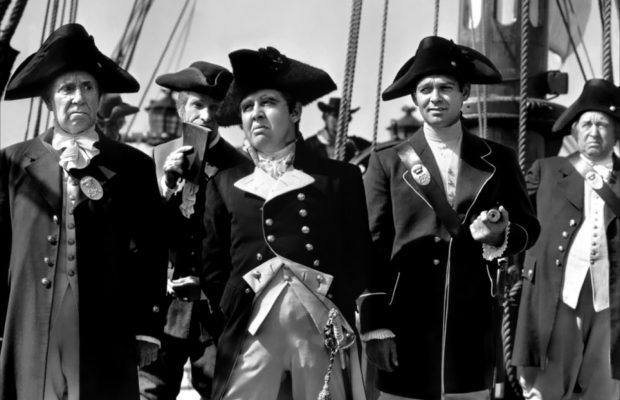
Toronto Film Society presented Mutiny on the Bounty (1935) on Monday, March 20, 2023 as part of the Season 75 Monday Evening Film Buffs Series, Programme 6.
Producer: Metro-Goldwyn-Mayer. Director: Frank Lloyd. Screenplay: Talbot Jennings, Jules Furthman, Carey Wilson, based on the book by Charles Nordhoff and James Norman Hall. Produced by: Frank Lloyd. Cinematography: Arthur Edeson. Editor: Margaret Booth. Art Direction: Cedric Gibbons. Set Decoration: Albert C. Wilson.
Cast: Charles Laughton (Captain Bligh), Clark Gable (Fletcher Christian), Franchot Tone (Roger Byam), Herbert Mundin (Smith), Eddie Quillan (Ellison), Dudley Digges (Bacchus), Donald Crisp (Burkitt), Henry Stephenson (Sir Joseph Banks), Francis Lister (Capt. Nelson), Spring Byington (Mrs. Byam), plus a large secondary cast including James Cagney (then on a hiatus from Warner Bros. during a contract dispute) and future stars David Niven and Dick Haymes, who were uncredited extras in the movie.
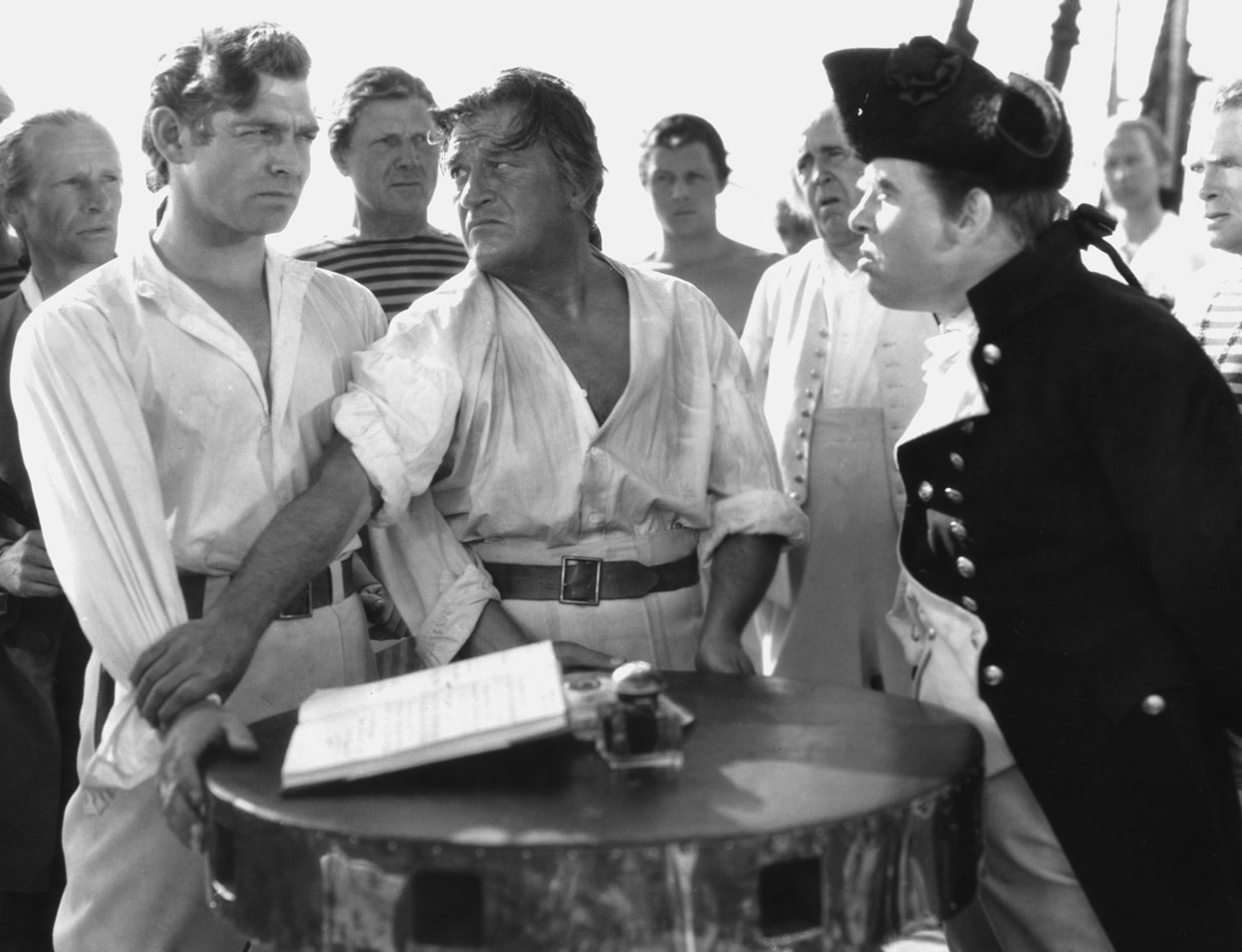
This film is a high seas adventure drama. Despite considerable historical inaccuracies, the film was a big box office success, becoming the highest-grossing film of 1935 and one of MGM’s biggest hits of the 1930s. The film received a leading eight nominations at the 8th Academy Awards, and won Best Picture.
For authenticity, the film was shot on location in the South Pacific’s Tahiti, as well as on Catalina Island, Santa Barbara, and in MGM’s Culver City studios, over a period of three months. The over-budget (about $2 million) MGM film was the studio’s most expensive production since Ben-Hur: A Tale of the Christ (1925), but it did very well at the box office, being the highest-grossing film of 1935 grossing $4.4 million.
MGM hired 2,500 Tahitian natives to serve as extras. The canoes which the natives used to paddle out to greet the Bounty’s crew were all shipped to Tahiti from Hollywood. When Frank Lloyd and his crew returned from Tahiti to Hollywood, they discovered that most of their location footage had been destroyed because of poor storage conditions. They had to sail back to Tahiti and re-shoot almost everything, which only added to the costs.
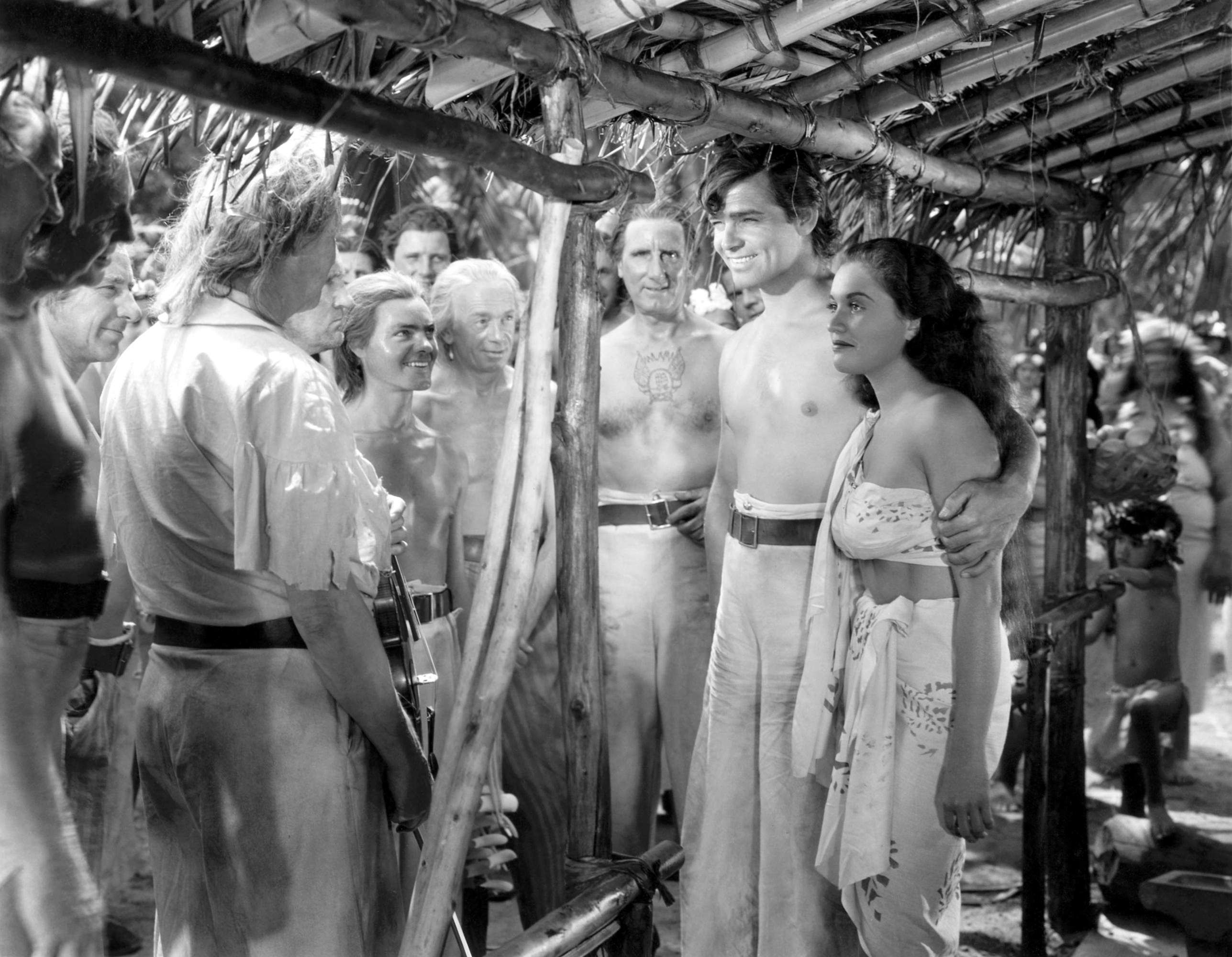
Charles Laughton, who had won the Best Actor Oscar for The Private Life of Henry VIII (1933), gave an exaggerated portrayal of the duty-obsessed, cruel, and arrogant Captain Bligh. He made the character one of the screen’s most memorable and abusive villains. It might also be noted that MGM had Wallace Beery as its first choice, but he turned down the role because of his intense disliking of Gable and long-distance film locations. This gave Laughton the opportunity to play the meaty role of the cruel captain. However, please note that during ocean filming Laughton was, in reality, terrified of the ocean and was violently seasick throughout most of the filming.
Virile Clark Gable, who had won the Best Actor Oscar the previous year for It Happened One Night (1934), took the secondary role as the fair-minded First Mate Fletcher Christian, although he was reluctant to wear silly-looking breeches, sport a sailor’s ponytail, and shave off his mustache. However, with his performance, he solidified his status as one of the leading actors of the 30s. Furthermore, Gable was initially disappointed when Franchot Tone was cast as Byam. The two actors had been bitter rivals for the affections of Joan Crawford while filming Dancing Lady in 1933, and they did not like each other at all.
However, during filming Gable surprisingly became close friends with Tone when they discovered a mutual interest in alcohol and women, both of which were abundantly available in Avalon, the island of Catalina’s famous pleasure town. What one might consider to be an uncanny way to patch up differences.
Also, Gable’s chief objection to working with Charles Laughton was the fact that his co-star rarely looked him in the eye during scenes. Laughton was a difficult man to work with and saw many of his characters as “each man a self-contained universe of pain.” Many times, Gable would storm off the set complaining that Laughton was trying to cut him out of the picture. However, the conflict only heightened the strained relationship between Capt. Bligh and Mr. Christian.
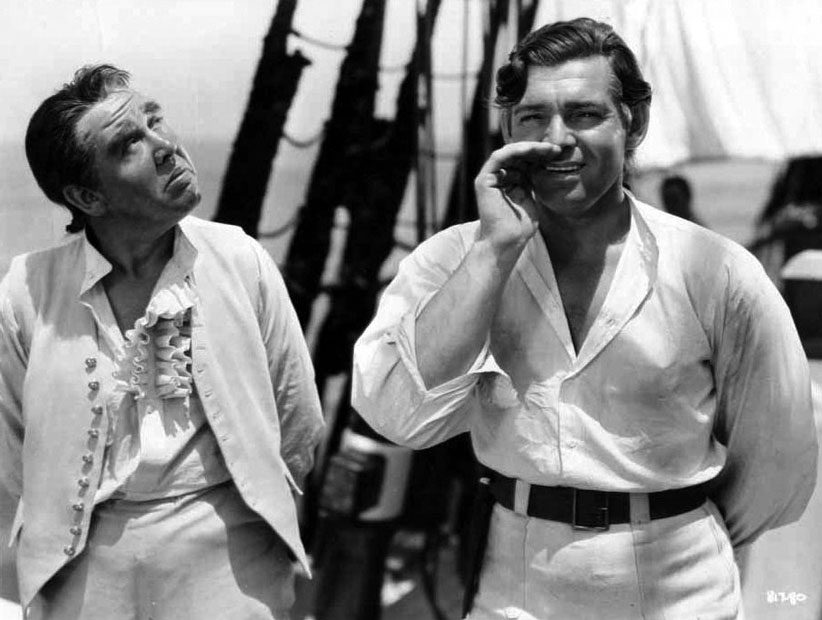
The director, Frank Lloyd, is credited with being a founder of the Academy of Motion Picture Arts & Sciences and the president from 1934 to 35. He had a lengthy career directing movies starting in the silent era with the 1915 film the Man for Indiana. With about one hundred and thirty films under his direction, his last film was The Last Command released in 1955. He won two Academy Awards, for Divine Lady (1928), and Cavalcade (1934). In 1935 he lost to John Ford’s The Informer.
There have been three successful movies based on the incident: Mutiny on the Bounty, the other two were made in 1962 starring Marlon Brando and Trevor Howard and The Bounty made in 1984 starring Mel Gibson and Anthony Hopkins. It is considered that the most recent version of the film is the most accurate, but none of the two infamous, vile captains portrayed come close to the Laughton rendition. It does not show him as having a single redeeming quality. He is a satanic creature, bound to have his way; he delights in imposing suffering on the common sailors, as well as on his ranking officers. Bligh is sadistic in his punishment and authoritarian in his absolute rule. The audience grows to dislike him immensely. And certainly, this is one of Laughton’s greatest film performances and why the viewer should see this film. Performances of this caliber are timeless.
Notes by Peter Bartl
You may also like...
-
News

Frances Blau
Toronto Film Society | February 27, 2024On Monday, February 26th, 2024, Toronto Film Society lost longtime friend, supporter, and board member Frances Blau. Known for her sense of humour, her love of film, her generosity,...
-
Special Events

The Ladykillers (1955) at the Paradise Theatre
Toronto Film Society | March 9, 2024Toronto Film Society presents Targets (1968) at the Paradise Theatre on Sunday, April 7, 2024 at 2:30 p.m. Ealing Studios arguably reached its peak with this wonderfully hilarious and...
Programming

Virtual Saturday Night at the Movies
Toronto Film Society | April 11, 2024Toronto Film Society is back in the theatre! However, we’re still pleased to continue to bring you films straight to your home! Beginning Season 73 until now we have...
4-
 Toronto Film Society | March 9, 2024
Toronto Film Society | March 9, 2024
-
 Toronto Film Society | November 6, 2022
Toronto Film Society | November 6, 2022
-
 Toronto Film Society | August 1, 2023
Toronto Film Society | August 1, 2023
Donate to Toronto Film Society – We’re now a Registered Charity!
-
Copyright © 2017 Toronto Film Society.

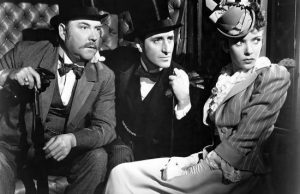
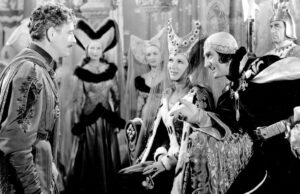
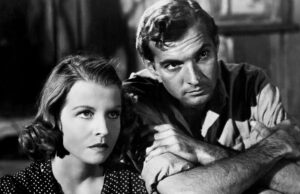
Leave a Reply